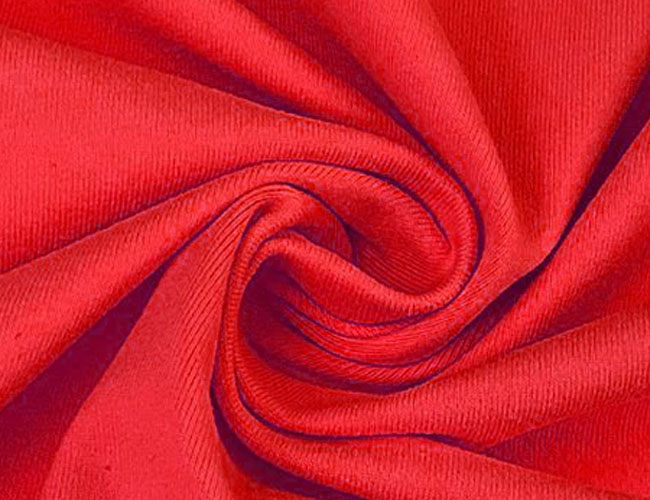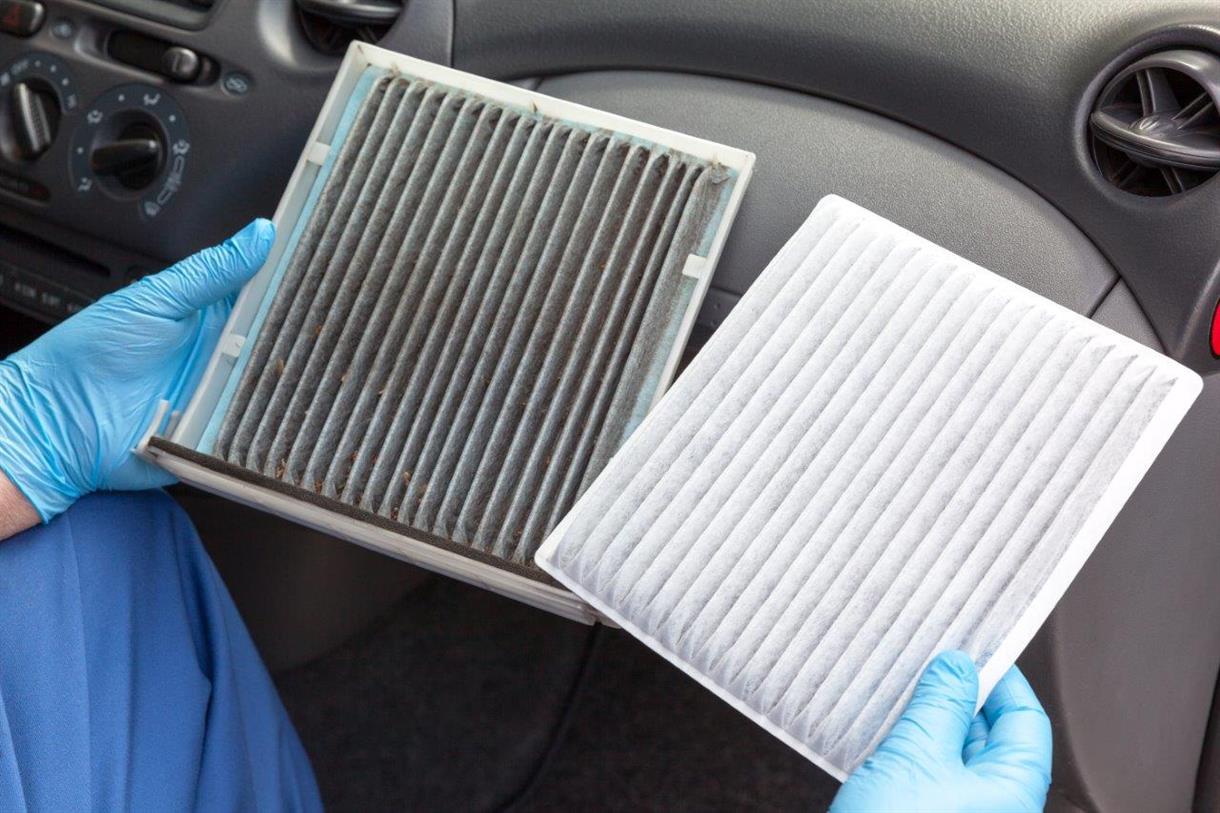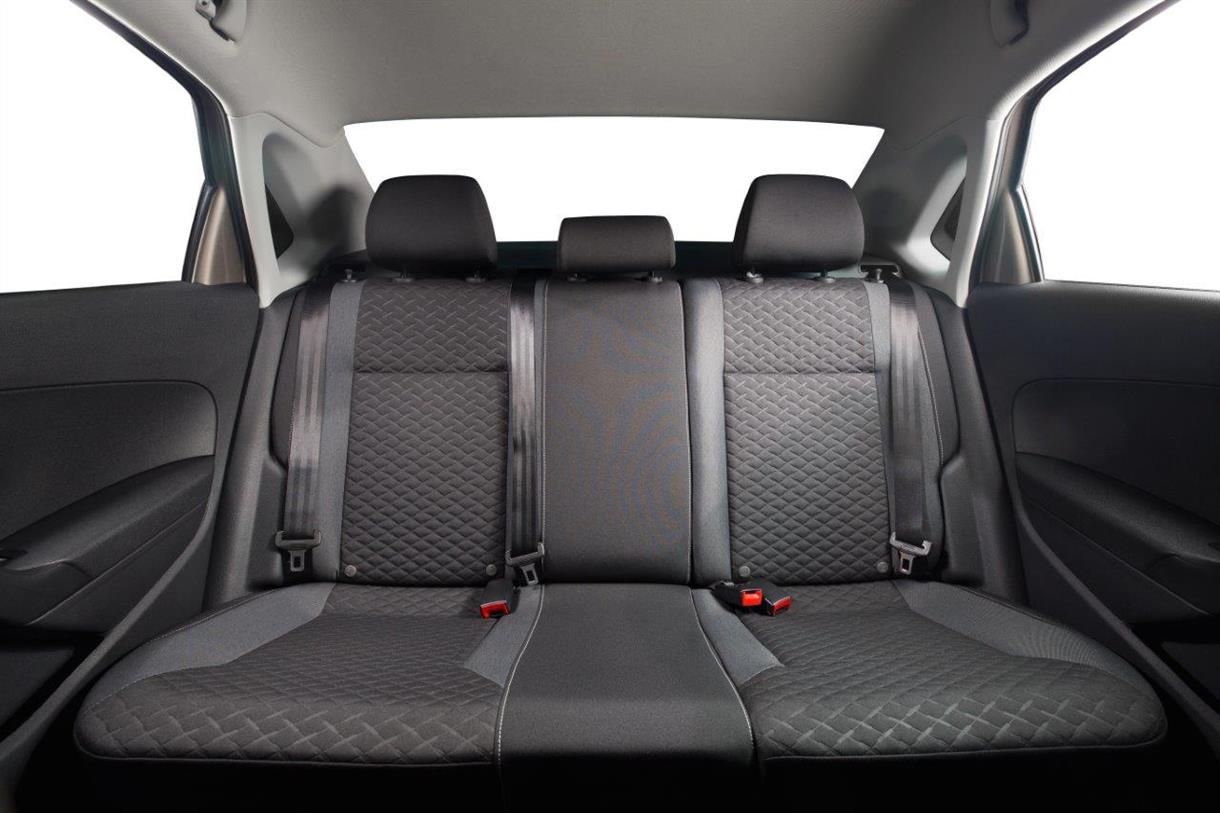
Micromodal fabric is a type of textile known for its softness, breathability, and luxurious feel. It is made from a natural raw material called beechwood, specifically the cellulose fibers derived from beech tree pulp. The process of manufacturing micromodal involves breaking down the wood pulp into a fine fiber, resulting in extremely fine and smooth yarns.
The "micro" in micromodal refers to the size of the fibers, which are thinner than those used in traditional modal fabrics. These ultra-fine fibers are responsible for the fabric's exceptional softness, which is often described as having a silky or cashmere-like texture. The unique properties of micromodal make it highly desirable for various applications in clothing and other textiles.
1. Softness: Micromodal is renowned for its unmatched softness, making it a sought-after choice for underwear, loungewear, and other garments meant to be worn close to the skin.
2. Breathability: The fine, natural fibers of micromodal allow air to circulate freely, making it a breathable fabric that keeps the wearer cool and comfortable, especially during hot weather.
3. Moisture-wicking: Micromodal has excellent moisture-wicking properties, absorbing and releasing moisture away from the skin, which helps maintain dryness even during physical activities.
4. Drape and Flow: The fabric has a beautiful drape and flow, making it ideal for creating elegant and flowing garments.
5. Durability: Despite its delicate feel, micromodal is surprisingly durable and can withstand regular wear and washing when cared for properly.
6. Eco-friendly: Since it is made from beechwood, a renewable resource, and processed using an eco-friendly closed-loop production system, micromodal is considered a more sustainable option compared to some synthetic fabrics.
Micromodal fabric is made through a multi-step process that involves the conversion of natural beechwood pulp into fine, soft fibers. The manufacturing process for micromodal is similar to that of traditional modal fabric, but it involves additional steps to create even finer fibers, hence the "micro" in its name. Here is an overview of how micro-modal fabric is made:
1. Sourcing Beechwood: The process begins with the harvesting of beech trees, which are a renewable and sustainable source of raw material. These trees are carefully choosed to ensure they meet the quality standards required for producing micromodal fabric.
2. Pulping: The harvested beechwood is chipped, and the wood chips are then chemically treated to break down the cellulose fibers into a pulp. This process is known as pulping and involves the use of eco-friendly chemicals in a closed-loop system, which means that most of the chemicals used are recycled and reused to minimize waste and environmental impact.
3. Extrusion: The beechwood pulp is then extruded through fine spinnerets (nozzles with tiny holes) to form long, continuous filaments of fiber. During extrusion, the pulp is mixed with a solvent to dissolve it and create a smooth, consistent flow.
4. Spinning: The extruded filaments are then stretched and spun into individual fibers. This process aligns the molecules and contributes to the strength and durability of the resulting micromodal fabric.
5. Finishing: After spinning, the fibers are treated to remove any remaining impurities or chemicals and to enhance their softness and overall quality. The fibers may be subjected to a heat treatment called annealing, which further refines their structure.
6. Weaving or Knitting: Once the micromodal fibers are ready, they are woven or knitted into fabric. The weaving process involves interlacing the fibers on a loom to create a cohesive textile, while knitting involves looping the fibers together to form a continuous fabric.
7. Finishing Treatment: After weaving or knitting, the micromodal fabric undergoes various finishing treatments to achieve the desired characteristics, such as softness, color, and texture. These treatments may include dyeing, printing, and mechanical softening processes.
8. Quality Control: Throughout the manufacturing process, strict quality control measures are applied to ensure that the micromodal fabric meets the required standards for softness, strength, colorfastness, and other performance attributes.
The resulting micromodal fabric is then used to create a wide range of products, including clothing, underwear, activewear, and luxury loungewear, known for their exceptional softness, breathability, and comfort.
Micromodal fabric is a type of fabric made from beechwood pulp. It is known for its softness, breathability, and luxurious feel. Due to its unique properties, micromodal is used in various applications, including clothing and other textile products. Here are some common uses of micromodal fabric:
1. Underwear and lingerie: Micromodal is a popular choice for making underwear, panties, and bras due to its softness and comfort against the skin. Its breathability and moisture-wicking properties make it ideal for intimate apparel.
2. T-shirts and tops: Micromodal is often used to create lightweight and silky-smooth t-shirts, tank tops, and other casual tops. The fabric drapes well and offers a flattering fit.
3. Sleepwear: Pajamas, nightgowns, and loungewear are frequently made from micromodal fabric because of its comfortable and cozy feel, promoting a good night's sleep.
4. Activewear: Micromodal's moisture-wicking properties make it suitable for activewear, such as leggings, sports bras, and workout tops. It helps keep the body dry during physical activities.
5. Casual wear: Micromodal fabric is used in various casual wear items like dresses, skirts, and jumpsuits, where its softness and drape add to the overall comfort and style.
6. Socks: Some premium socks use micromodal to provide a smooth and soft texture that keeps feet dry and comfortable.
7. Baby clothing: Micromodal is gentle on sensitive baby skin, making it an excellent choice for baby clothes like onesies, bodysuits, and sleepers.
8. Bedding and linens: Micromodal is sometimes used to create luxurious bed sheets, pillowcases, and towels due to its softness and absorbency.
9. Scarves and accessories: Micromodal scarves and wraps offer a lightweight and elegant touch to outfits.
It's important to note that micromodal is generally considered a high-quality fabric, and items made from it can be more expensive compared to standard cotton garments. When using or caring for micromodal fabric, follow the manufacturer's instructions to maintain its softness and longevity.
1. Micromodal: This is the standard type of micromodal fabric made from beechwood pulp using a specific manufacturing process. It is incredibly soft and smooth, making it ideal for various clothing items and accessories.
2. MicroModal Air: This variation of micromodal is even finer and lighter, offering enhanced breathability and a feather-light feel. It is often used in lightweight and breathable garments like activewear and summer clothing.
3. MicroModal Edelweiss: This type of micromodal is manufactured using an eco-friendly process called Edelweiss technology. The process recycles water and solvents, making it more sustainable and environmentally friendly compared to traditional micromodal production.
4. MicroModal Black: Micromodal Black is a variant that has been dyed using a deep black color. The dyeing process ensures a rich and long-lasting black shade, making it suitable for black clothing items that maintain their color over time.
5. Micromodal Stretch: Some micromodal fabrics are blended with a small percentage of elastane or spandex to add stretch and improve the fabric's elasticity. This type is commonly used in activewear and fitted clothing.
6. Micromodal Supima: Micromodal Supima is a blend of micromodal and Supima cotton. Supima cotton is a premium and extra-long-staple cotton known for its strength and softness. The blend results in a luxurious fabric with added durability and increased softness.
7. Micromodal Tencel: This blend combines micromodal with Tencel, a fabric made from sustainably sourced wood pulp. The blend enhances the fabric's moisture-wicking properties and contributes to its eco-friendly nature.
1. Eco-friendly production process: Micromodal is made from beechwood pulp, which comes from sustainably managed beech tree forests. The production process involves using a closed-loop system, which means that the chemicals used in the production are recycled and reused, reducing water consumption and waste generation. Additionally, some versions of micromodal, such as MicroModal Edelweiss, use even more environmentally friendly production methods, further reducing the impact on the environment.
2. Renewable and biodegradable: Beech trees, the source of micromodal, are a renewable resource. The trees are not cut down for their pulp; rather, they are harvested, and new trees are planted to replace them. Micromodal is also biodegradable, which means it can naturally decompose at the end of its lifecycle, reducing landfill waste.
3. Water-efficient: The closed-loop production system used to create micromodal fabric requires less water compared to conventional cotton production. This makes micromodal a more water-efficient choice for fabric production.
4. Low energy consumption: The manufacturing process for micromodal requires less energy compared to certain synthetic fibers like polyester. This helps reduce the overall carbon footprint associated with its production.
5. Softness and durability: Micromodal has a long-lasting softness and doesn't pill easily. Its durability ensures that products made from micromodal can have a longer lifespan, reducing the need for frequent replacements and further promoting sustainability.
6. Biodegradable dyes: In some cases, micromodal fabrics are dyed using eco-friendly and biodegradable dyes, contributing to a more sustainable end product.
7. Closed-loop recycling: Some manufacturers have implemented closed-loop recycling systems for their micromodal products. This means that old or damaged micromodal items can be recycled to create new fibers or textiles, reducing waste and promoting a circular economy.
Micromodal fabric, like any other fabric or material, has both positive and negative environmental impacts. Here are some ways micromodal fabric can impact the environment:
1. Renewable Resource: Micromodal is made from beechwood pulp, which comes from beech trees. Beech trees are a renewable resource, and responsible harvesting practices ensure that new trees are planted to replace those used for production.
2. Biodegradability: Micromodal is biodegradable, meaning it can naturally break down over time without leaving behind harmful microplastics or contributing to long-term pollution.
3. Closed-Loop Production: Many manufacturers use a closed-loop production process, recycling water and chemicals, which reduces water consumption and waste production. This closed-loop system is more environmentally friendly compared to the open-loop systems used in some other fabric production processes.
4. Energy Efficiency: Micromodal production generally requires less energy compared to certain synthetic fibers like polyester, reducing the carbon footprint associated with its production.
5. Eco-friendly Dyes: Some micromodal fabrics are dyed using eco-friendly and biodegradable dyes, minimizing the environmental impact of the dyeing process.
Negative Environmental Impacts:
1. Chemical Use: While the closed-loop system helps recycle and minimize chemical use, the production of micromodal still involves the use of chemicals. Some chemicals used in the manufacturing process can be harmful to the environment if not managed properly.
2. Deforestation: The demand for beechwood pulp for micromodal production can lead to deforestation if not managed sustainably. Responsible sourcing practices, such as using certified wood from well-managed forests, can help address this concern.
3. Transportation: Micromodal production may involve transportation of raw materials and finished products, contributing to carbon emissions if not managed efficiently.
4. Land Use: Like all agricultural-based materials, the production of beechwood pulp requires land for cultivation, which may lead to land-use changes and potential impacts on local ecosystems.
5. Water Usage: While micromodal production can be water-efficient compared to some other fabrics, it still requires water for the processing of beechwood pulp.
Overall, micromodal fabric is often considered more environmentally friendly compared to certain conventional fabrics, especially synthetic ones like polyester. However, its environmental impact is not entirely neutral, and there are both positive and negative aspects to consider. To mitigate the negative impacts, it is essential for manufacturers and consumers to prioritize sustainability, choose responsible sourcing practices, and adopt eco-friendly production and waste management methods.
Micromodal and cotton are both popular choices for fabric in clothing and other textile products, but they have distinct characteristics and properties that set them apart. Here's a comparison between micromodal and cotton:
1. Source:
- Micromodal: Micromodal is made from beechwood pulp, which comes from beech trees. The production process involves a chemical process to convert the wood pulp into fibers.
- Cotton: Cotton is a natural fiber derived from the cotton plant's seedpods. It is harvested, ginned to remove seeds, and then spun into yarn.
2. Softness and Comfort:
- Micromodal: Micromodal is known for its exceptional softness and luxurious feel against the skin. It has a silky-smooth texture, making it a popular choice for underwear, sleepwear, and other clothing items where comfort is essential.
- Cotton: Cotton is also soft and comfortable, but it may not be as silky-smooth as micromodal. It is a breathable fabric that is widely used for a wide range of garments and textiles.
3. Breathability:
- Micromodal: Micromodal is highly breathable and has excellent moisture-wicking properties, making it ideal for activewear and undergarments.
- Cotton: Cotton is naturally breathable and allows air to circulate, making it a popular choice for warm weather clothing.
4. Absorbency:
- Micromodal: Micromodal has higher absorbency than cotton, which means it can wick moisture away from the skin more effectively.
- Cotton: Cotton is absorbent but may retain moisture longer than micromodal.
5. Strength and Durability:
- Micromodal: Micromodal is softer and more delicate compared to cotton. It may not be as strong as cotton and could be more susceptible to wear and tear.
- Cotton: Cotton is known for its strength and durability, making it suitable for everyday use and high-wear applications.
6. Environmental Impact:
- Micromodal: Micromodal is considered more environmentally friendly compared to conventional cotton, especially if produced using eco-friendly methods. It comes from renewable beechwood sources and is biodegradable.
- Cotton: Conventional cotton production can have a significant environmental impact due to pesticide and water usage. However, organic cotton and sustainable farming practices have emerged to mitigate some of these concerns.
7. Price:
- Micromodal: Micromodal is generally more expensive than cotton due to its softness and luxurious feel.
- Cotton: Cotton is a widely produced and cost-effective natural fiber, making it more budget-friendly.
In summary, micromodal and cotton each have their unique advantages and applications. Micromodal is prized for its softness, breathability, and moisture-wicking properties, making it suitable for intimate wear and activewear. Cotton, on the other hand, is a versatile and cost-effective natural fiber commonly used in a wide range of clothing and textiles. The choice between micromodal and cotton depends on the specific requirements, comfort preferences, and environmental considerations of the individual or manufacturer.
All Rights Reserved: https://www.groupgf.com/info-detail/micromodal-fabrics
Copyright Notice: This is an original (translated) article from G&F Group Inc., please indicate the source from G&F GROUP INC... If there is any infringement, please contact us first.
 Techtextil & Texprocess Rounded Off
Techtextil & Texprocess Rounded Off
 Nonwovens in daily life ----- filtration
Nonwovens in daily life ----- filtration
 Nonwovens in daily life ----- automotive
Nonwovens in daily life ----- automotive
 What is SAP – superabsorbent polymers
What is SAP – superabsorbent polymers